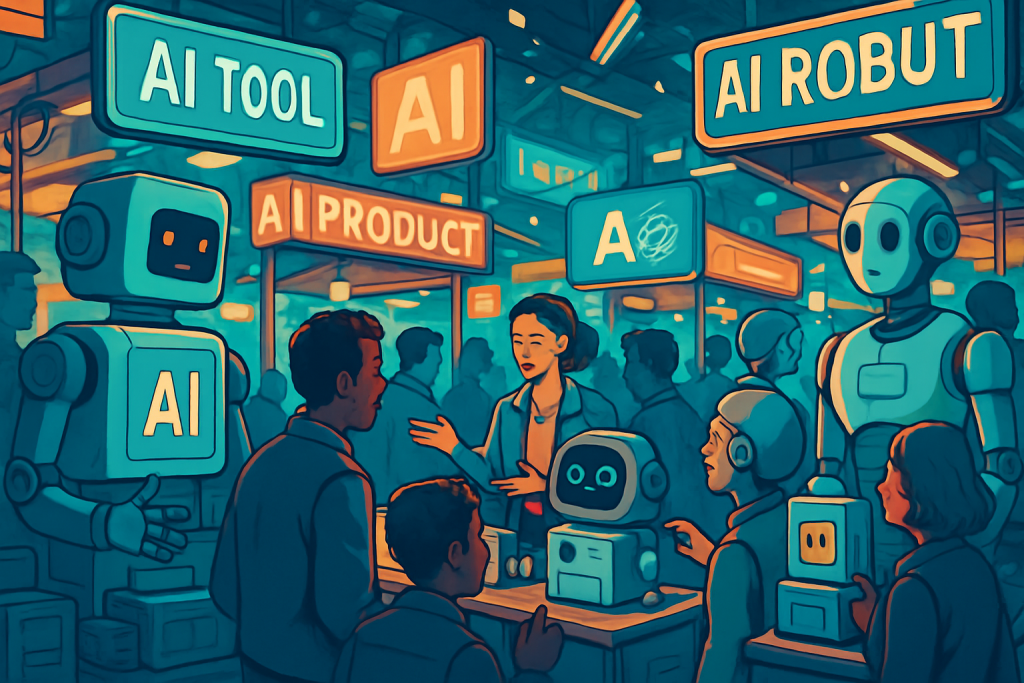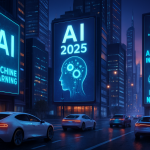The year is 2025. Flying cars are still just a pipe dream, but your refrigerator can now write poetry (mostly bad haikus about expired milk). And the AI arms race? It’s hotter than ever. This week, at the Axios AI+ Summit, White House AI advisor Sriram Krishnan dropped a truth bomb that’s been echoing around Silicon Valley: the U.S. should measure its success in the AI battle against China not by theoretical benchmarks or algorithmic prowess, but by cold, hard market share.
Think of it like this: it’s not enough to build the better mousetrap. You have to sell the most mousetraps. And that, my friends, is a whole different ballgame.
Krishnan, a key advisor to President Trump on all things AI, essentially framed the competition as a commercial one. Forget abstract metrics; the nation that dominates the AI marketplace wins. It’s a shift in perspective, a pivot from pure research and development to aggressive commercialization. It’s like turning the Death Star into a franchise. And frankly, in Trump’s America, it’s a strategy that makes perfect sense.
But where did this all come from? Let’s rewind a bit. The U.S. and China have been locked in a technological tug-of-war for years, with AI emerging as a critical battleground. We’ve seen massive investments in AI research from both sides, countless articles debating which country has the upper hand, and enough think-pieces to fill the Library of Congress. The fear? Falling behind and ceding technological supremacy to a rising China. It’s a narrative straight out of a Tom Clancy novel, only with algorithms instead of submarines.
Krishnan’s statement echoes President Trump’s own declaration back in July, when he vowed that the U.S. would do “whatever it takes” to lead the world in AI. Strong words, sure, but words that now have a clearer meaning: dominate the market. This isn’t just about having the smartest AI; it’s about having the AI that everyone uses. The Alexa of everything, if you will.
And the implications? They’re enormous. This focus on market share could trigger a wave of government initiatives designed to boost American AI companies. Think tax breaks, subsidies, relaxed regulations, and perhaps even a little bit of good old-fashioned industrial espionage (okay, maybe not, but you get the idea). We could see a surge in mergers and acquisitions as companies scramble to consolidate their market position. It’s going to be a feeding frenzy, people.
Of course, there’s a darker side to all this. A relentless focus on market share could lead to corner-cutting, ethical compromises, and a race to the bottom in terms of safety and security. Imagine a world where AI-powered surveillance tools are deployed without proper oversight, all in the name of gaining a competitive edge. It’s a dystopian scenario worthy of a Philip K. Dick novel.
Adding another layer of intrigue, Krishnan also touched upon the administration’s efforts to ban “woke” AI from receiving federal funding. The stated goal? To promote “truth-seeking” systems. It’s a move that’s sure to spark controversy, raising questions about censorship, bias, and the very definition of “truth” in the age of AI. It almost seems like something out of Orwell’s 1984.
Now, let’s unpack this “woke” AI ban. What does it even mean? Is it AI that’s programmed to be politically correct? AI that challenges the status quo? Or is it simply AI that disagrees with the current administration? The ambiguity is the point, of course. It’s a signal, a message to the tech industry that certain viewpoints are favored over others. And that, in itself, is a dangerous precedent.
And the big question: does President Trump himself even use AI? Krishnan admitted that he wasn’t sure. Which, frankly, is hilarious. Imagine the leader of the free world, supposedly spearheading an AI revolution, not even knowing how to use a basic chatbot. It’s like a general who’s never fired a gun. Or maybe it’s just a brilliant PR move, a way to project an image of authenticity in a world increasingly dominated by artificial intelligence. You decide.
The financial implications of this AI arms race are staggering. We’re talking about trillions of dollars in investment, new industries emerging, and existing industries being completely transformed. The companies that dominate the AI market will become the new tech giants, the Amazons and Googles of tomorrow. And the countries that foster those companies will reap the economic rewards.
But beyond the dollars and cents, there are deeper philosophical questions at play. What does it mean to be human in a world increasingly shaped by artificial intelligence? What are the ethical responsibilities of AI developers? And how do we ensure that AI is used for the benefit of all, not just a select few?
Krishnan’s remarks at the Axios AI+ Summit have set the stage for a new chapter in the AI revolution. It’s a chapter that will be defined by competition, innovation, and perhaps a little bit of paranoia. Buckle up, folks. It’s going to be a wild ride.
Discover more from Just Buzz
Subscribe to get the latest posts sent to your email.


